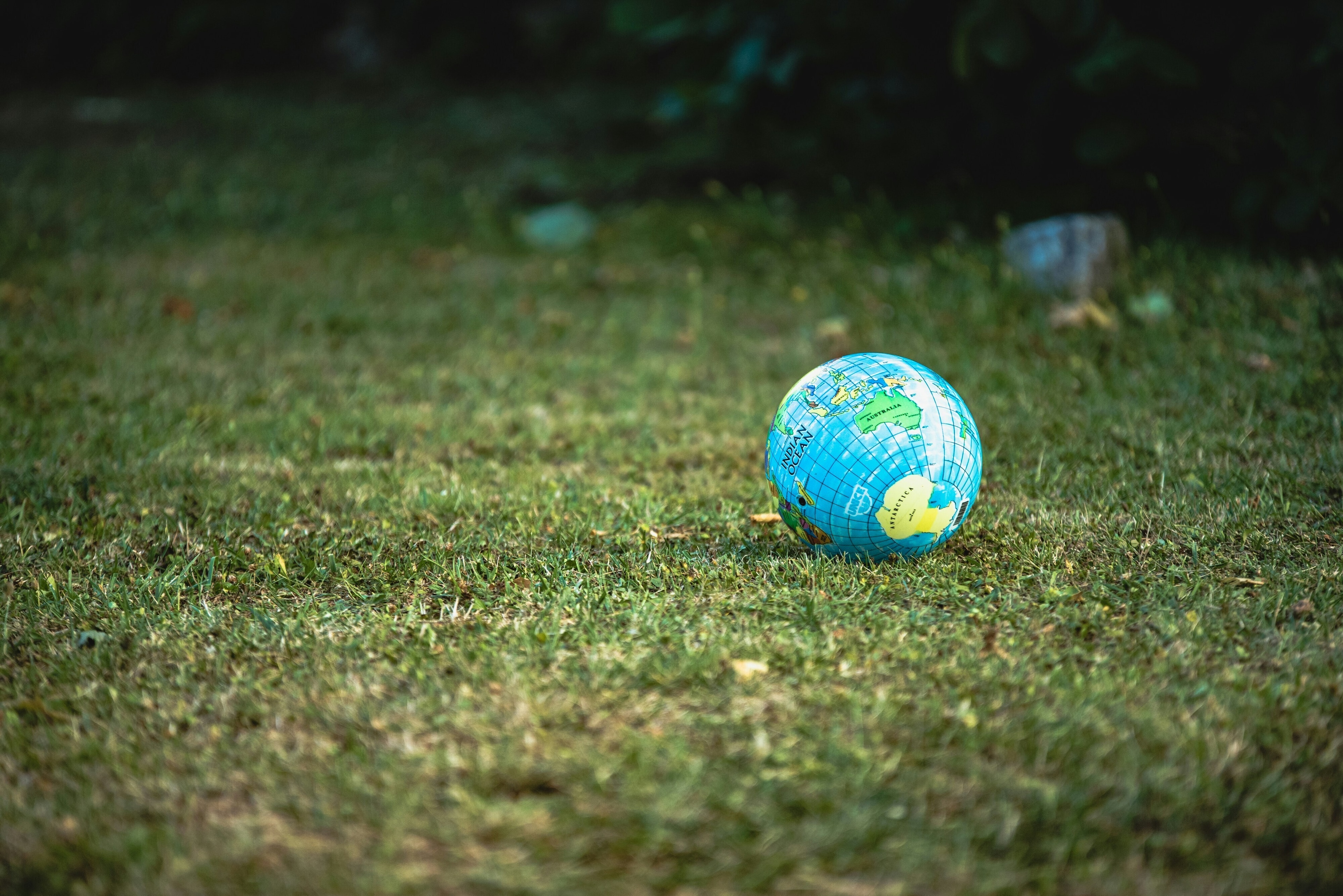Existing Paris climate pledges commit sea level rise to ‘one metre by 2300’

Waves crash against the coastal wall in the village of Carnlough as high tides and strong winds cause some flooding in coastal areas of Northern Ireland. Image: REUTERS/Cathal McNaughton

Get involved with our crowdsourced digital platform to deliver impact at scale
Stay up to date:
Innovation
Global greenhouse gas emissions up to 2030 could be enough to raise sea levels by more than one metre by 2300, a new study suggests.
The research, published in the Proceedings of the National Academy of Sciences, estimates this to be the long-term level of sea level rise, even if countries around the world meet the emissions reduction pledges they put forward under the Paris Agreement.
The five biggest emitters would contribute around 25% of this projected rise, the study says, with China accounting for 10cm by 2300, followed by the US with 7cm, the 28 member countries of the EU with 5cm, and India and Russia each with 2cm.
The lead author tells Carbon Brief that the findings highlight “that near-term emissions reductions are absolutely mandatory to limit long-term impacts from global climate change”.
Beyond 2100
According to the special report on the ocean and cryosphere, recently published by the Intergovernmental Panel on Climate Change (IPCC), it is “virtually certain” that global sea levels are rising, and there is “high confidence” that this rise is accelerating.
The report also says there is a “very high confidence” that recent acceleration over recent decades is due to increasing melt from the Greenland and Antarctic ice sheets. Projections for 2100 suggest sea levels could rise by 0.43-0.84m, relative to 1986-2005, with the top end of the projection range at 1.1m.
In general, projections for climate change – and even mitigation scenarios themselves – tend to use 2100 as an end point. The long-term goal of the Paris Agreement, for example, is to limit global average temperature rise this century to “well below 2C” above pre-industrial levels – and to pursue efforts to 1.5C.
However, for sea levels in particular, this timescale overlooks the longer-term impacts that human-caused greenhouse gas emissions set in motion. The combination of ice sheet melt and continued thermal expansion as the oceans warm means sea levels will “rise for centuries”, the IPCC says, and “will remain elevated for thousands of years”.
Some studies have looked beyond 2100. For example, research published last year suggested that each five-year delay in meeting the Paris Agreement goal of reaching global peak CO2 emissions could drive sea levels to rise by an additional 20cm by 2300.
The new study – by some of the same authors – estimates what the sea level rise commitment will be if countries around the world fulfil their initial emission reduction pledges under the Paris Agreement up to 2030.
‘Stylised approach’
The Paris pledges are more formally known as the “nationally determined contributions”, or “NDCs”. These were the commitments made by individual countries for how much they would aim to cut their emissions by 2030. They are the first tentative step along the way to meeting the long-term goals of the Paris Agreement.
In the study, the researchers estimate the impact on sea levels if all countries met their NDC targets by 2030 – and then all global emissions were immediately cut to zero. This method takes into account historical emissions since 1750 and those in the immediate future only, as the paper explains:
“This stylised approach allows us to isolate the effects of NDCs and country-level emissions on longer-term global mean sea level rise without making assumptions about global or individual country emissions pathways after 2030.”
Under this scenario, peak warming would reach about 1.5C around 2035, the study says, and then decline to around 1.3C by 2100.
To simulate sea level rise, the study uses a “sea level emulator”, said lead author Dr Alexander Nauels – a scientific advisor at Climate Analytics – in an interview with Carbon Brief at the European Geosciences Union (EGU) General Assembly in April this year. This model is “able to capture all the different drivers of sea level change”, he added.
The emulator incorporates “everything that was published in the IPCC fifth assessment report (“AR5”), Nauels explained:
“The main drivers, as we know, are thermal expansion and global glaciers, then you have different contributions from the Greenland and Antarctic ice sheets and land water storage. And we, basically, took reference data from process-based complex models and projections, and calibrated our emulator to those. So it’s, basically, reflecting those responses, per component.”
The charts below show emissions (left), global average temperature (middle) and sea level rise (right) from 1750 to 2100 in the model runs under the stylised scenario.

By 2100, the emissions up to 2030 – and no more – would cause around 43cm of sea level rise, increasing to around 105cm by 2300, Nauels noted:
“So, just with the pledged emissions under the Paris Agreement, at the moment we are facing one metre of sea level rise in 2300.”
Individual contributions
The study also “zooms into the country-level commitment”, says Nauels, focusing on the five biggest emitters of China, the US, the 28 member countries of the EU (“EU28”), India and Russia.
To isolate the individual contributions of these emitters to sea level rise by 2300, the researchers focus on two periods. The first is 1991-2030, which they call the “IPCC period” because it begins just after the first IPCC assessment report was published, says Nauels:
“For this period, the Top 5 highest-emitting countries are responsible for about 25% of the total we will face in 2300.”
China has the largest contribution of the five, with 10cm by 2300, the study finds, followed by the US with 7cm, the EU28 with 5cm and India and Russia each with 2cm.
The second emission period – dubbed the “Paris period” – accounts for the emissions after the Paris Agreement in 2015 until 2030, so a shorter period. And for this period the researchers estimate about 12cm, or 10%, of sea level rise is due to those Top 5 emitters.
This includes a 6cm contribution from China, 3cm from the US, 2cm for the EU28 and approximately 1cm from India and Russia, the study finds, concluding:
“For the 15-year Paris timeframe, the Top 5 emitters thus commit global mean sea level rise to a media of around 12cm, more than 50% of the observed 20th century rise.”
The charts below show the breakdown of emissions (left-hand charts), global temperature (middle) and global sea level rise contributions (right) for the IPCC period (upper row) and the Paris period (lower row) out to 2030, 2100 and 2300, respectively, in the stylised scenario.
The shading indicates the contributions from China (dark brown), the US (pale brown), the EU28 (mid brown), India (light blue) and Russia (dark blue).

Drawing attention
The study draws “attention for the long term commitment of the sea level”, says Prof Roderik van de Wal, chair of sea level and coastal impacts at Utrecht University and lead author on the sea level rise chapter (pdf) of the IPCC special report on the ocean and the cryosphere. Van de Wal, who was not involved in the study, tells Carbon Brief:
“This is caused by the long time scales involved [in sea level rise] and not always fully appreciated outside the scientific arena, so this is important to keep emphasising.”
However, there are limitations in the approach used in the study, notes van del Wal, particularly by “not addressing the uncertainty or the physics behind the Antarctic contribution”, which is “critical” for sea level rise beyond 2100.
The emulator the researchers use assumes a “simplistic relationship between global mean warming and the Antarctic contribution to sea level”, says van del Wal. This means it might not encompass the full range of potential changes in the Antarctic ice sheet over the coming centuries.
Nevertheless, while the estimate of the Antarctic might not turn out to be a realistic assessment, van del Wal says he “appreciates” the emphasis on the long timescales. This conclusion is reinforced by Nauels:
“If you include sea level rise in the bigger picture, it becomes even more clear that near-term emissions reductions are absolutely mandatory to limit long-term impacts from global climate change. So, in the context of the Paris Agreement, it’s very important to make that link…It’s a clear-cut case that you have to start emissions reductions now because it actually makes a big difference in the future.”
Don't miss any update on this topic
Create a free account and access your personalized content collection with our latest publications and analyses.
License and Republishing
World Economic Forum articles may be republished in accordance with the Creative Commons Attribution-NonCommercial-NoDerivatives 4.0 International Public License, and in accordance with our Terms of Use.
The views expressed in this article are those of the author alone and not the World Economic Forum.
Related topics:
The Agenda Weekly
A weekly update of the most important issues driving the global agenda
You can unsubscribe at any time using the link in our emails. For more details, review our privacy policy.
More on Climate ActionSee all
Santiago Gowland
April 24, 2024
Amanda Young and Ginelle Greene-Dewasmes
April 23, 2024
Andrea Willige
April 23, 2024
Agustin Rosello, Anali Bustos, Fernando Morales de Rueda, Jennifer Hong and Paula Sarigumba
April 23, 2024
Carlos Correa
April 22, 2024
Shyam Bishen and Annika Green
April 22, 2024






